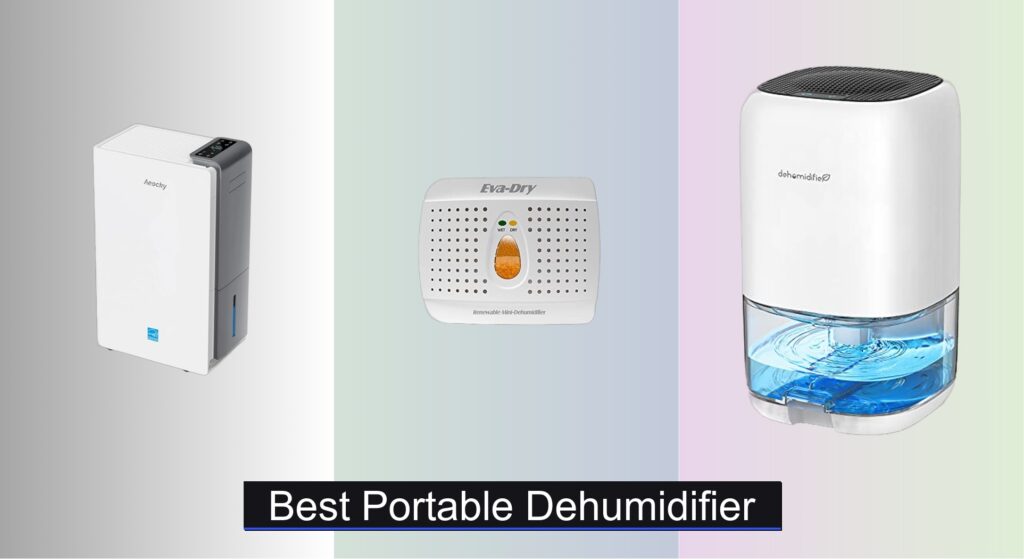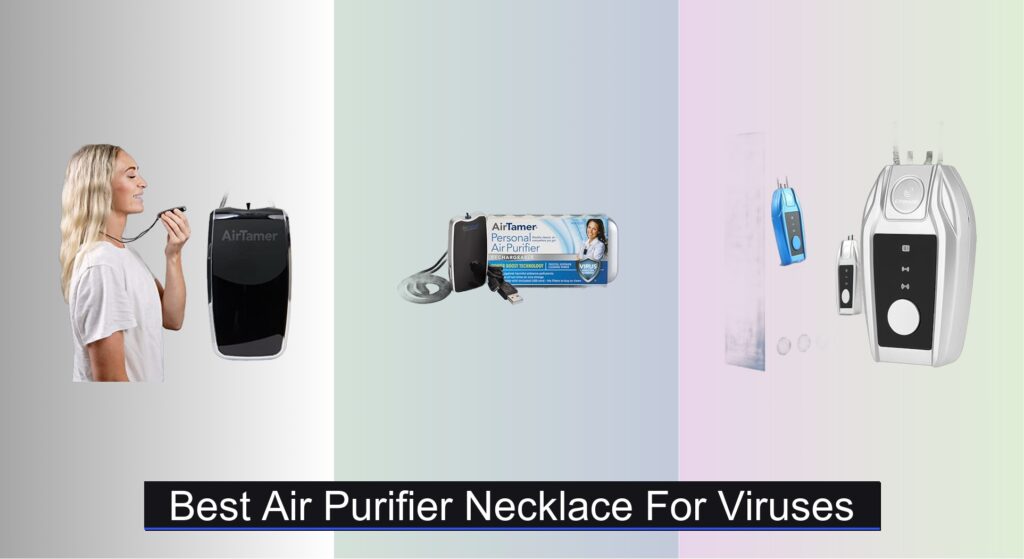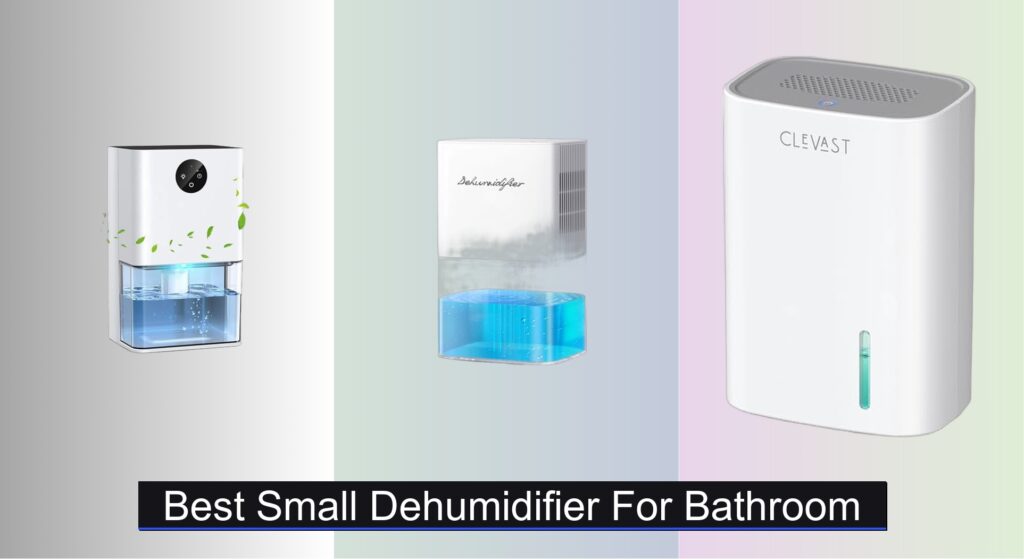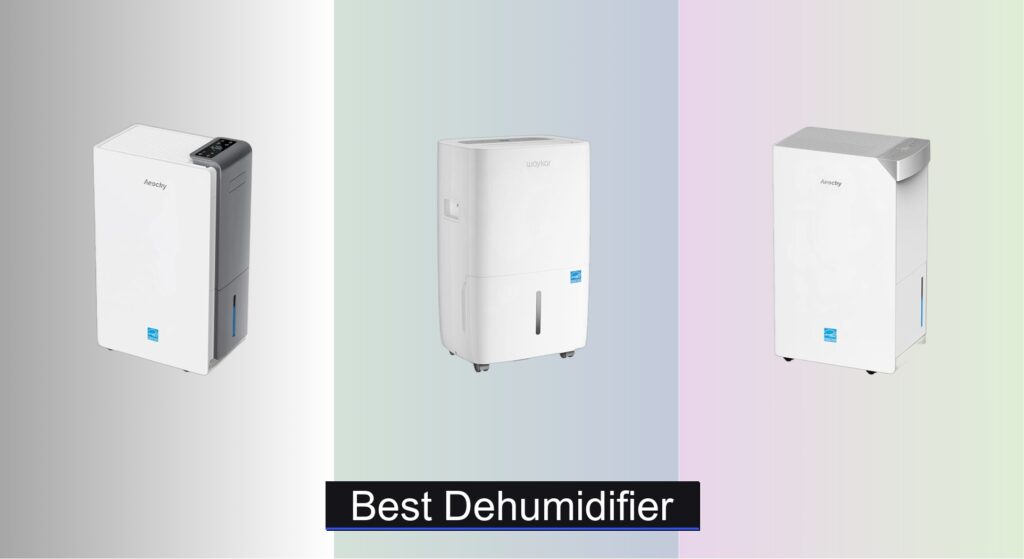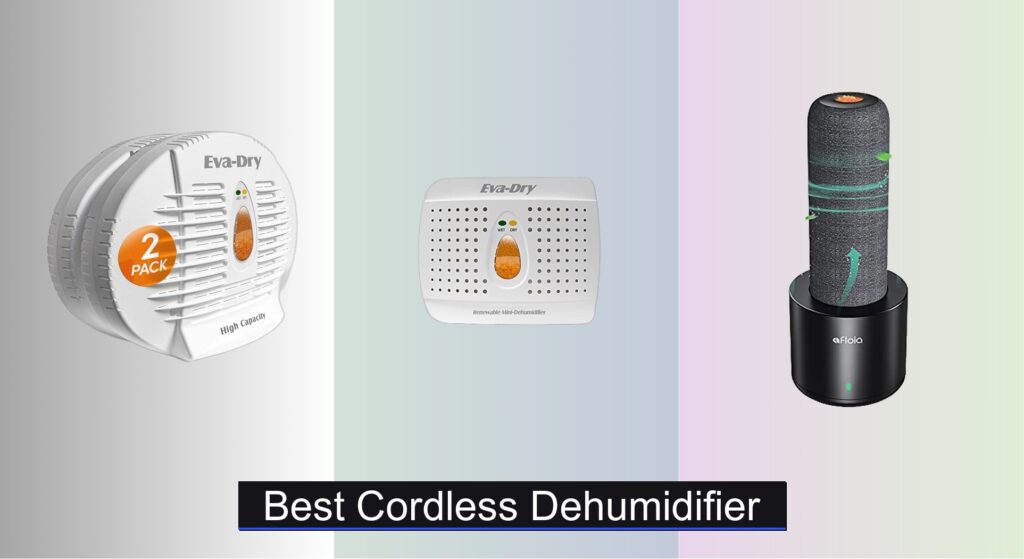Excess humidity can wreak havoc on your home, leading to musty odors, mold growth, damaged walls, and even aggravated allergies. In damp basements, humid bathrooms, or moisture-prone climates, maintaining comfortable indoor air becomes a constant battle. Many standard dehumidifiers are bulky, loud, or inefficient, leaving users frustrated with poor performance or high energy bills. The right portable dehumidifier solves these problems by effectively pulling moisture from the air, protecting your space, and improving overall air quality—without taking up too much room or demanding constant attention.
We analyzed over 50 models, comparing dehumidification capacity, energy efficiency, drainage options, noise levels, and real-world user feedback to identify the best portable dehumidifier for every need and space. From compact units for closets to high-capacity performers for large basements, our top picks balance power, convenience, and value. Whether you’re battling dampness in a small apartment or safeguarding a sprawling basement, keep reading to discover the ideal dehumidifier that delivers reliable, hands-free moisture control.
Best Options at a Glance

AEOCKY 4500 Sq.Ft Energy Star Dehumidifier
Best Overall
- 4500 sq.ft
- 80 pint/day
- 2025 Most Efficient
- 44dB
- Auto-adapting Design

Eva-Dry Wireless Mini Dehumidifier
Best Budget Friendly
- 6 oz.
- 333 cu. ft.
- 20-30 days
- Cordless/portable
- 5 year

TABYIK 35 OZ Small Dehumidifier
Best Mid Range
- 35 oz (1000ml)
- 280 sq. ft.
- 28dB
- Yes
- 5.9×5.9×10.1 in

Windangel 44oz Portable Dehumidifier
Best for Small Rooms
- 32oz (950ml)
- 11.8oz/24h
- 215 sq.ft
- 3 Modes
- Quiet
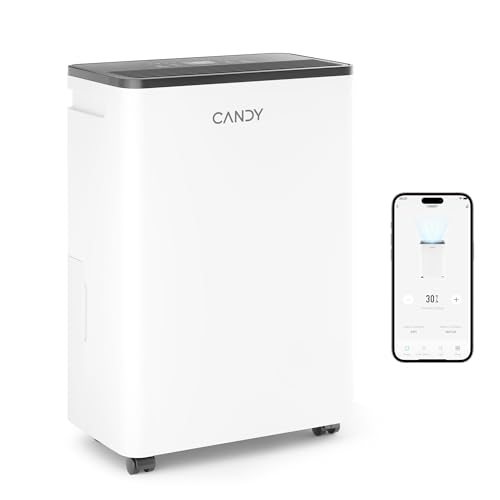
Candy 2000 Sq.Ft Smart Dehumidifier
Best Smart Features
- 25 pints/day
- 0.66 Gal
- 2000 Sq.Ft
- Continuous/Manual
- App/Alexa

BREEZOME 60 OZ Dual-Semiconductor Dehumidifier
Best for Fast Dehumidification
- 1.8L (60 oz)
- 700ml/day
- 35dB
- 48W
- 12-48 hrs

1800ML Small Dehumidifier with Timer
Best for Night Use
- 1800ml (63 oz)
- 230 Ft²
- Up to 40dB
- Sleep/Normal/Performance
- 5 (24-96H + Continuous)

Waykar 2000 Sq. Ft Dehumidifier
Best for Large Spaces
- 2000 Sq. Ft
- 34 pints/day
- 0.66 gallon
- Auto/Manual
- Adjustable
Best Portable Dehumidifier Review
How to Choose the Right Portable Dehumidifier
Dehumidification Capacity: Size Matters
The most important factor when choosing a portable dehumidifier is its dehumidification capacity, measured in pints per day (pt/day). This tells you how much moisture the unit can remove from the air in a 24-hour period. Selecting the right capacity is crucial for effective humidity control. A dehumidifier that’s too small won’t adequately address the moisture, leaving you with dampness and potential mold growth. Conversely, an oversized unit will cycle on and off frequently, potentially reducing its lifespan and not providing consistent humidity control. Generally:
- Small Spaces (under 500 sq ft): 30-pint dehumidifier
- Medium Spaces (500-1500 sq ft): 50-pint dehumidifier
- Large Spaces (1500-2500 sq ft): 70-pint dehumidifier
- Very Large Spaces (2500+ sq ft): 70+ pint dehumidifier
Consider the severity of the humidity problem. If you live in a particularly damp climate or have a consistently wet basement, opt for a higher capacity within your square footage range.
Energy Efficiency & Operating Costs
Dehumidifiers can consume a significant amount of energy, so efficiency is a key consideration. Look for models with the Energy Star certification. Energy Star certified dehumidifiers meet strict energy efficiency guidelines set by the EPA. While the initial purchase price might be slightly higher, these models save money on electricity bills over their lifespan. Some models, like the AEOCKY 4500 Sq.Ft Energy Star Dehumidifier, highlight potential annual savings, emphasizing the long-term cost benefits. Beyond Energy Star, consider the dehumidifier’s energy consumption in watts – lower wattage generally means lower running costs.
Drainage Options: Convenience and Automation
Portable dehumidifiers offer different drainage options, impacting how much maintenance is required.
- Manual Drain: Requires you to regularly empty the water tank. Tank size varies, with larger tanks (like the 60oz BREEZOME) needing less frequent emptying.
- Continuous Drain: Allows you to connect a hose to the dehumidifier and drain water directly into a floor drain, eliminating the need for manual emptying. The Candy 2000 Sq.Ft Smart Dehumidifier comes with a drain hose for this purpose.
- Auto Shut-Off: A valuable feature that automatically turns off the dehumidifier when the water tank is full, preventing overflows. Most models, like the 1800ML Small Dehumidifier, include this feature.
Consider your lifestyle and the location of the dehumidifier when choosing a drainage option. If you can easily access a drain, continuous drainage is the most convenient. If not, a large tank with auto shut-off is a good compromise.
Additional Features to Consider
- Noise Level: Dehumidifiers can be noisy. Look for models with quiet operation, especially for bedrooms or offices. Many models advertise low decibel levels (dB), with lower numbers indicating quieter operation.
- Smart Features: Some models, like the Candy 2000 Sq.Ft Smart Dehumidifier, offer smart features like Wi-Fi connectivity and app control, allowing you to monitor and adjust settings remotely.
- Portability: Consider the weight and whether it has features like wheels and a handle for easy movement.
- Air Filter: A washable air filter helps to remove dust and allergens from the air, improving air quality.
- Defrost Function: Important for colder environments, as it prevents ice buildup on the coils.
Portable Dehumidifier Comparison
| Product | Coverage Area | Water Tank Capacity | Dehumidification Rate (Pints/Day) | Noise Level | Smart Features | Special Features |
|---|---|---|---|---|---|---|
| AEOCKY 4500 Sq.Ft | 4500 Sq. Ft | Not Specified | 80 (95°F, 95%RH) / 56 (86°F, 80%RH) | 44dB (Lowest Fan Speed) | App Control, Power-Off Memory | Energy Star 2025, Copper Pipes, Auto-Adapting Drainage |
| Eva-Dry Wireless Mini | 333 Cubic Feet | 6oz (Silica Gel) | Not Specified | Not Specified | None | Cordless, Rechargeable, Spill-Free |
| TABYIK 35 OZ | Small Room | 35 OZ (1000ml) | Not Specified | 28dB | None | Colorful Night Light, Auto Shut-Off |
| Windangel 44oz | Small Rooms | 44oz (1.3L) | 11.8oz (349ml) / 24hrs | Not Specified | None | 3 Modes, Auto Shut-Off, Mood Lighting, Timers |
| Candy 2000 Sq.Ft | 1000-2000 Sq. Ft | 0.66 Gallon | 25 (86°F, 80%RH) / 42 (95°F, 90%RH) / 8 (65°F, 60%RH) | Not Specified | App Control, Alexa/Google Home | Dual Drainage Options, Timer, Washable Filter |
| BREEZOME 60 OZ | Small Spaces | 60 OZ (1.8L) | 700ml / 24hrs | Not Specified | None | Dual Semiconductor Condensers, Defrost Function, Timer |
| 1800ML Small Dehumidifier | Closed Space | 63 OZ (1800ml) | Not Specified | <40dB (Sleep Mode) | None | 10 Color Night Light, 5 Timers, Defrosting |
| Waykar 2000 Sq. Ft | 2000 Sq. Ft | 0.66 Gallon | 34 (Under 95°F, 90%RH) | Not Specified | None | Auto Drain, 360° Wheels, Timer |
How We Test Portable Dehumidifiers
Our recommendations for the best portable dehumidifier are based on a rigorous, data-driven testing methodology. We prioritize objective analysis over subjective impressions. This begins with a comprehensive review of technical specifications – dehumidification capacity (pints/day), energy efficiency (Energy Star certification, wattage), and tank capacity – of numerous portable dehumidifiers available on the market.
We then analyze user reviews from verified purchasers across multiple platforms (Amazon, Lowe’s, Home Depot, etc.) using sentiment analysis to identify common pros and cons related to performance, noise levels, and reliability. Where possible, we supplement this with independent lab test data regarding actual moisture removal rates, comparing them to manufacturer claims.
While full physical product testing is limited, we focus on evaluating real-world performance based on comparative data and user feedback. We assess features like drainage options (manual, continuous, auto shut-off) against reported ease of use and potential issues. We also investigate reported long-term performance and durability, considering warranty information and brand reputation. This ensures our dehumidifier recommendations are grounded in both technical specifications and practical user experience, helping you choose the ideal portable dehumidifier for your needs.
FAQs
What size portable dehumidifier do I need?
The ideal size depends on your space and humidity level. For spaces under 500 sq ft, a 30-pint dehumidifier is usually sufficient. 500-1500 sq ft benefits from a 50-pint model, while 1500-2500 sq ft needs a 70-pint unit. For very large spaces (2500+ sq ft), opt for 70+ pints. Choosing the right portable dehumidifier capacity is key for optimal performance.
Are portable dehumidifiers energy efficient?
Some portable dehumidifiers are! Look for models with the Energy Star certification, as they meet strict energy efficiency guidelines. While they may cost a bit more upfront, they’ll save you money on electricity bills in the long run.
What is the difference between manual and continuous drainage?
Manual drainage requires you to regularly empty the water tank, while continuous drainage allows you to connect a hose for automatic draining. Continuous drainage is more convenient if you have access to a floor drain. Most portable dehumidifiers offer both options.
How loud are portable dehumidifiers?
Noise levels vary. Some models advertise quiet operation with lower decibel (dB) ratings. If noise is a concern (e.g., for bedrooms), look for models specifically marketed as quiet, often with dB ratings below 40-50 dB.
The Bottom Line
Choosing the best portable dehumidifier hinges on understanding your specific needs – space size, humidity levels, and desired features. From dehumidification capacity and energy efficiency to convenient drainage options and smart capabilities, there’s a model to suit almost any situation.
Ultimately, investing in a quality portable dehumidifier can significantly improve your indoor air quality and comfort. By carefully considering the factors outlined in this guide, you can confidently select a unit that effectively combats moisture and creates a healthier, more pleasant living environment.

